Digging the Jazz Icons from TV Archives
posted December 2, 2010 1 Comment
![]()
 Some of the greatest filmed recordings of jazz might have sat collecting dust for decades, or forever, had it not been for the curiosity and dedication of one company and its Jazz Icons series.
Some of the greatest filmed recordings of jazz might have sat collecting dust for decades, or forever, had it not been for the curiosity and dedication of one company and its Jazz Icons series.
Since 2006, the American company, Reelin’ in the Years Productions, has issued four sets, each of seven DVDs, presenting top-flight live-recording footage of jazz greats. The company has found the footage in the vaults of television stations and networks, most in Europe, that did what few, if any, American stations did in the 1950s, ’60s, and ’70s, nor since – and is unlikely to do in the future: They presented jazz in concert programs of 30 to 90 minutes.
Live, unadulterated jazz.
Reelin’ in the Years released its first set of Jazz Icons DVDs in 2006 and drew expressions of praise and gratitude from jazz aficionados. In the Wall Street Journal, for example, Nat Hentoff gasped: “This is like the discovery of a bonanza of previously unknown manuscripts of plays by William Shakespeare.”
Hyperbole, aside, the enthusiasm of jazz aficionados was to be expected. The set included live recordings of Dizzy Gillespie from 1958 and 1970; Louis Armstrong (1959); Quincy Jones (1960); Thelonious Monk (1966); Ella Fitzgerald (1957 and 1963); Buddy Rich (1978); Count Basie (1962); and Chet Baker (1964 and 1979). Most of those sold between 15 and 25 thousand copies, each, the Coltrane and Armstrong releases more.
Also included in that first release was a truly remarkable find, a live recording from 1958 of Art Blakey and the Jazz Messengers.
As Tom Gulotta, the art director and co-producer at Reelin’ in the Years, explains in the interview he made on December 1 2010 with MIAN, that release was a memorable one in part due to its being almost completely unknown, even among Blakey enthusiasts, and in part because it featured a lineup widely consider one of the finest line-ups in the history of the art form. The 55-minute concert, filmed in Belgium in 1958, had been unwatched for almost 50 years until it came under surprising circumstances to Gulotta and his colleagues. The recording, it turned out, had been made one month to the day after the band recorded its masterpiece Moanin’, and is the only known visual document of a top-notch band that stayed together for only six months.
The Jazz Icons series is just one part of the operations of Reelin’ in the Years Productions. It has issued many music DVDs in various genres. It is, for example, the producer of the Grammy-nominated American Folk Blues Festival 1962-1969 series, as well as such critically acclaimed releases as Soul to Soul, a filmed concert from a 1971 concert in Accra, Ghana, by the likes of Ike & Tina Turner, Wilson Pickett, Santana, and the Staple Singers, Muddy Waters: Classic Concerts, and Marvin Gaye: The Real Thing in Performance, 1964-1981, which traces the trajectory of Gaye’s extraordinary life in music.
RITY, based in San Diego, California, is also the largest music-footage library in the world, with more than 10,000 hours of performances from all genres of music, recorded during the last 60 years. Its main business is clip sales – negotiating fees for the use of film clips for productions such as documentaries. Its accomplishment is in part due to savvy deals it made with television stations where great American music was recorded at a time when American stations paid scant respect to American musicians’ accomplishments in many genres (not that things have changed significantly, since).
RITY (which began with a now-amusing founder and president David Peck and one of the Spice Girls, for which, see the FAQ page on the company’s web site) hooked up with 30 television stations in Europe, Australia, and Japan whose archival material it licenses to all forms of media. The material ranges from full-length concerts to studio live and lip-sync performances.
The company also licenses some interviews with performers and b-roll footage. And it has more than 2,000 concerts and studio live performances recorded for radio from the last 40 years.
Most of the material, film and audio, has rarely been seen because it comes from European, Japanese, and Australian broadcast stations that aired it once, twice, or in some cases not at all.
That is certainly the case with the material the company has released in its Jazz Icons series. Most of the material on the 30 DVDs, to date (nine in the first series, seven in the next three), aired as concerts on German, French, or British television. The stations’ vaults contain enough material in very good shape that the series could, if buyers are interested, continue for some time. But sales have been down, of late – as for the whole DVD market – so the series is facing a testing time.
After the acclaim accorded to the first series, the second and third sets appeared in 2007 and 2008, and then the company issued Series 4 in August 2009. The next package is now scheduled to appear next summer (summer 2011).
The material is of a consistently high standard, as are the arrangements the company makes with musicians and others associated with the original material. For example, RITY pays royalties to surviving musicians, including sidemen, and to the estates of the departed.
Each DVD features a booklet with an essay by a jazz historian as well as rare or unseen photos. Many of the featured artists or their estates have contributed rare personal photographs, memorabilia, and forewords.
How does the Jazz Icons series relate to the Reelin’ in the Years output, over all? Is Jazz Icons to some degree a labor of love?
Tom Gulotta: It’s a labor of love, certainly, but it is profitable. So it’s not like we’re doing it for free or losing money, or some people who do something as a labor of love make no money from it. It is moderately successful, financially.
The DVD market, in the last five years, the bottom has just dropped out of it, so it’s a very difficult market to have success in. But the type of stuff that we put out is such a niche market that there is a pretty loyal fan base that buys it, and that makes it worthwhile.
This year we couldn’t do one, but next year we fully intend to do a Series 5, next summer.
Where is your market?
We still sell most of our DVDs in America, but we sell some in Japan, some in England, some throughout Europe, but for the most part it’s America, right now. That’s the biggest market.
What’s your sense of the state of the archives: How much stuff is there still out there to be unearthed, where is it, and what kind of condition is it in?
Most of the stuff we’ve found is in Europe. There’s a nominal amount of footage in Australia, and Japan. The American footage almost nonexistent, unfortunately. But Europe seems to have the most.
At RITY we have relationships with about 30 television stations throughout Europe, that’s why we have such easy access to the archives, and we have people actually digging in warehouses looking for stuff for us.
The next series is probably going to be mostly from France, because that’s our newest relationship. The stuff from France has been pretty much untapped, so we’re excited about that series coming. We may even go all French, I’m not sure. But certainly mostly French.
Is the footage generally in good shape?
Yeah, it’s usually in good shape. We’ve had a few things that we could tell were gems but were damaged beyond repair. We’ve had a couple of things that we had some digital reworking done to try to improve the quality. Sometimes that works, sometimes it doesn’t.
For the most part, we do transfers from original master tapes or master films. So we always start out with the best quality that it can be. That’s why our stuff looks and sounds as good as it does.
Most jazz DVDs you’ll see, if they come out of Spain, are usually bootlegs, and there’s hundreds of them. People make the mistake of thinking this is the best quality we can get, I suppose. These guys, it’s just VHS dubs, of who knows how many generations, and nobody’s getting paid, and the publishing is not licensed, the artists or their estates are not getting any money, the footage holders aren’t. It’s a shame.
But from the very beginning we decided to do it the right way, and everybody gets paid and all the songs are published, the licensing is done above board.
What’s your sense of why the masters or good footage is available from those European stations? Is it because they revere jazz or is it just the way they do things?
I’m not sure. Jazz has always been considered America’s greatest art form, I think, especially in Europe and the rest of the world, and they appreciated it at much deeper level than Americans did in the ’50s and ’60s and even in the ’70s when this stuff was being filmed. So from the standpoint of the people shooting the footage, I think they knew it was a treasure, even back then.
Most jazz on television in America was just a couple of songs on a variety show, maybe, or a Christmas special or something like that. But it wasn’t a whole concert filmed and broadcast like they Europe. They just loved to show a whole concert, an hour or an hour and a half concert or even a half-hour concert, which is a much different experience.
Are there particular cases that stand out in your mind of finding something particularly special?
The great story from the first series, when we first started, was Art Blakey and the Jazz Messengers story which is that we originally had a show from Belgium from 1965 that we were considering for the first series, of Art Blakey, and when we asked the television station to make a new transfer of it, they sent us a video tape with a new transfer and it turned out it was not the 1965 show, but another show that they had found and that had been mislabeled, and it turned out to be Art Blakey and the Jazz Messengers from 1958, right after they recorded the Moanin’ album, so it’s the Moanin’ lineup with all those great players – [tenor saxophonist] Bennie Golson, [pianist] Bobby Timmons, trumpet legend Lee Morgan…
So that was a great find, and nobody had ever seen it before. It had never been bootlegged and it had never even been catalogued in the collectors’ circles as being something that was filmed and broadcast. It was never even broadcast, at the time, just filmed. And it was a great show.
That issue of the bootlegs is interesting, because there’s so much dumped onto YouTube and no-one is getting paid for it. Is that a concern for your company?
At first we thought it might be a concern, and I guess for some people who are not die-hard fans and they just want to see a clip on YouTube, then that’s fine, for them, of some of the greats, whoever it might be. And that quality, on your computer screen, with those little computer speakers, then that’s fine. What we do appeals to a different level of fan, someone who see it on a bigger screen, hear it in better quality. And a lot of educators, a lot of people who know that what we’ve done is to preserve a very important part of the history of jazz forever. A lot of people get it because they know, wow, this is something really important that I hope my grandkids will discover one day, and this is one way to preserve it.
What’s your sense of how much there is still to be mined?
The thing about Jazz Icons, when we started out, we as a company wanted to really put out quality shows by what we considered to be the household names in jazz, the household names of jazz, the biggest stars, so it would be a profitable venture. And that’s very difficult to keep doing because there are so many levels of the different sidemen who became bandleaders in their own right. And everyone has their own favorite players, and their own opinion of who should be in the Jazz Icons series.
So there are literally hundreds and hundreds more shows that are in Europe, in the vaults, that were by great mid-level jazz artists. They were some of the greats; they were just never household names. But they may never make it into our series because it just wouldn’t be profitable for us to put out a DVD if it didn’t pay for itself.
And that’s the problem, is trying to decide which ones are going to be profitable, and hoping they will be profitable, and which ones just aren’t. It’s a shame for fans of some of these people that there be only a couple of thousand people in the world who are fans of their music any more.
That’s a shame because as the music gets older, the fans are getting older, and a lot of them are dying. And there aren’t enough new fans to really replace them. Unfortunately that just seems to be the case with jazz. It’s not a form of music that has made a great resurgence.
I see that what you have in the series is the big names, what we now consider the mainstream, but there was so much recorded and released on LP in France that was from the avant-garde in the 1960s. Do you have a sense that there is filmed material of that type in those European archives, too?
There is, and we’re trying to mine the really old stuff first. But we have found quite a number of exciting things in fusion, early fusion from the early 70s, that would make a really cool series, maybe, one day. We’ll just see. Like I say, it all depends on the marketplace because somebody has to pay for this project because it’s very expensive, the way we do it. We do seven DVDs at a time, with a bonus disc, and a box set. It’s a lot of money to outlay, for a company, to do the whole series. So, it’s a tough call in this day and age for someone to do that. We have to make sure to protect their investment so that they want to keep doing the series.
We learned a hard lesson, this year. The last series just did not sell as much as we had hoped, and the company could not afford to do a new series. It was just that simple.
So we’ll wait a year to do series 5.
Is it more costly or less than to make other kinds of music DVDs?
{Click on thumbnail to view gallery}
No, I would say it’s cheaper because we are doing whole programs, whole concerts. Sometimes two whole concerts, or three. The way we do our other DVDs is, they are anthology DVDs and there may be 16 or 24 performances from different television stations all over the world and we have to license each clip individually and that gets to be more expensive than licensing a whole concert, usually.
Have the sales been good, other than last year – was that surprising, given how things had gone with the previous series?
Yeah, Series 4… I think that what happened is, we didn’t get the same kind of press as we’d gotten originally. When something in the fourth incarnation of a series, the response it tends to get it “oh, yeah, that series is continuing; that’s good,” but they’re not going to give it ink, the big magazines and newspapers. It’s just not quite as exciting a story as it used to be, and if they had written about it in the previous years, they were not going to write about it again, so soon.
That, in addition to budget cuts in advertising, and just the fact that maybe some of the names in series 4 not quite the household names that we had in series 1, 2, and 3.
You mentioned that the series are being well received in educational institutions. Do you get good distribution to libraries, as well?
Yeah, a lot of libraries. And a lot of colleges and music schools. We hear from educators all the time, people thanking us for putting this out, because it’s really helpful in their curriculum. It’s one thing to try to teach somebody how John Coltrane fingered this phrase on the saxophone, but it’s another thing to watch John Coltrane finger it on the saxophone.
It seems like DVDs like this really would revolutionize jazz education, no?
Yeah. We’ve heard from some people who’ve said that this is the best thing they’ve ever used in the classroom.
That gives us a good feeling.
Are the transfers fairly easy, or how does that go?
We always go back to original source material, which sometimes it’s film. In the case of Art Blakey, that was actually film that was shot in 1958. Sometimes we use Kinescope, which is film of a television screen, because it was originally videotaped, and then the tape was erased, because it was very expensive, back then. That’s how most television stations did it: They taped it on videotape, they broadcast the video, then they would film the screen one time as they were running the tape to preserve it on film and then they would erase the tape and do the next show on that.
So sometimes the films are Kinescope. But then other times we get lucky and the original videotapes exist. We have the station transfer it to Digibeta – digital betatape – and then we have the audio remastered. We put the video through some filters in the computer to boost contrast and color and try to retrieve as much of the original quality as might exist. Then we edit it here in our studio. And we do all of the artwork for the booklet. We hire great writers to write the liner notes. We go to archive photo houses to get some of the best in rare jazz photos. Part of what we do is to try to use photos that people have never seen been, so the whole package is a treat for the music lover. We’re music lovers, that’s why we do it that way. We always want to produce something that we’d want to buy.
Interview by Peter Monaghan. Photos copyright Reelin’ in the Years Productions & copyright holders, as noted.
Previous Post: Rick Prelinger's Lost Landscapes of San Francisco
Next Post: Digging the Jazz Icons from TV Archives

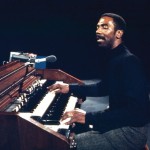
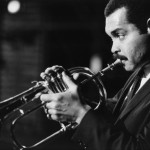
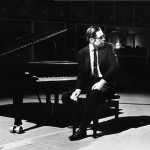

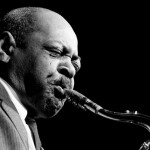
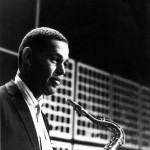
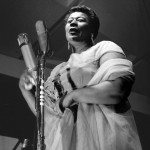
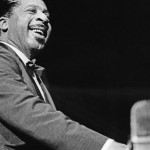
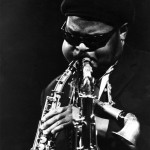
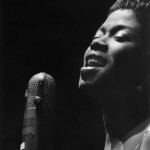
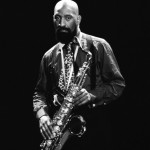
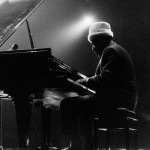
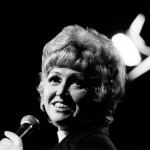
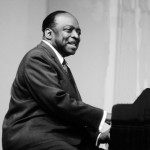
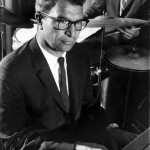
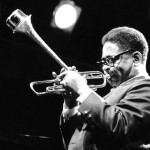
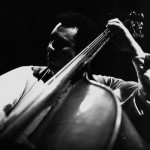
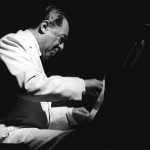
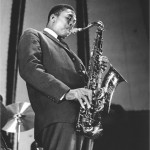
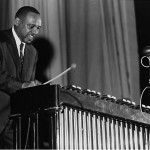
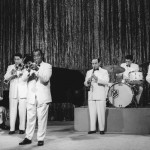
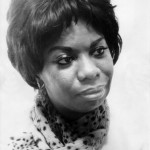
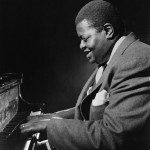
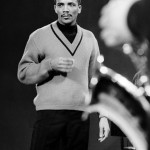
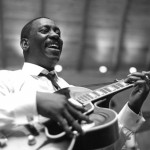
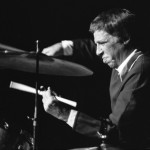
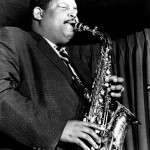






Amazing Collection , Thanks Alot